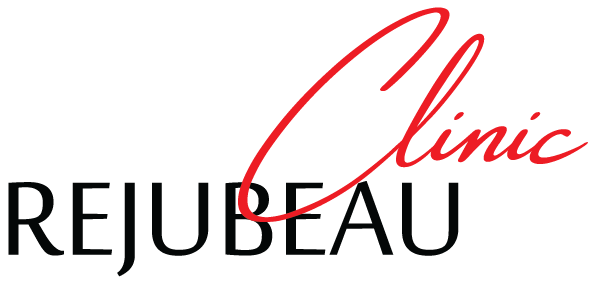Non-surgical nose job, also called liquid rhinoplasty or non-injectable rhinoplasty, is a cosmetic procedure that uses injectable fillers to reshape the nose without surgery.
Here’s a breakdown of what it is:
Procedure: Dermal fillers, usually hyaluronic acid, are injected by a healthcare professional into specific areas of your nose. These fillers add volume and definition to reshape areas such as bridges, smooth ridges, or correct minor asymmetries.
benefits:
Non-invasive and faster than surgical rhinoplasty.
Less recovery time compared to surgery.
This gives you the opportunity to see how you might like a different nose shape before surgery.
Limitations:
Results are temporary and usually last 12-18 months.
It cannot fix the major structural changes of the nose.
Not for everyone – better for minor fixes.
Here’s what else you need to know about non-surgical nose job

It is important to consult with a qualified healthcare professional, such as a dermatologist or plastic surgeon, to discuss your goals and determine whether you are a good candidate for the procedure.
There are some risks associated with injectable fillers such as bruising, swelling and infection. Be sure to discuss these things with your doctor before doing this procedure.
The cost of non-surgical rhinoplasty can vary depending on the complexity of the procedure and the experience of the provider.
Who should not do rhinoplasty?
There are many reasons why a person may not be a good candidate for rhinoplasty, surgical or non-surgical. Here is a breakdown of some of the factors to consider:
Health considerations:
Underlying medical conditions: People with uncontrolled diabetes, heart disease, or bleeding disorders may not be good candidates because of increased risks during surgery or complications from recovery.
Heavy smoking: Smoking can interfere with the healing process and increase the risk of infection after surgery.
Recent illness: Being sick before surgery can increase the risk of complications during the procedure.
Descriptive notes:
Unrealistic expectations: It is important to have realistic goals for what rhinoplasty can achieve. Discussing your desired outcome with a surgeon beforehand can help determine if surgery is the right approach.
Inappropriate nasal structure: Your nasal structure may not be suitable for certain types of rhinoplasty, especially for non-surgical options with fillers that may not provide the desired results for major structural changes.
Age: For rhinoplasty surgery, the facial structure must be fully developed. Typically, surgeons recommend waiting until after puberty (around 14-15 for girls and 15-16 for boys).
Psychological considerations:
Body dysmorphia: People with body dysmorphic disorder (BDD) may not be satisfied with the results of rhinoplasty and may experience increased anxiety or depression.
Seek surgery for someone else: It is very important to have a nose job for yourself and your own reasons, not because of pressure from others.
Additional considerations:
Pregnancy and breastfeeding: It is better to wait until breastfeeding ends and you do not become pregnant before performing a nose job.
Previous nose surgery: Scars from previous nose surgeries can make nose surgery more complicated.
It is important to consult with a qualified healthcare professional, such as a dermatologist or plastic surgeon, to discuss your individual situation and determine whether rhinoplasty, surgical or non-surgical, is the right choice for you. They can evaluate your medical history, facial structure, and goals to provide the best recommendation.
The advantage of nasal filler over rhinoplasty

Nasal fillers have many advantages over surgical rhinoplasty (sometimes called a “rhinoplasty”). Here is a breakdown of the key benefits:
Less invasive: The biggest advantage is that nasal fillers are a non-surgical procedure. This means no use of a scalpel, anesthesia or a long hospital stay. This procedure is done in the office and by injection, and it becomes more scary for some people.
Faster recovery: Since no major incisions or manipulations are involved, recovery from filler injections is significantly faster than rhinoplasty. You can expect some slight swelling and bruising, but most people can resume normal activities within a day or two.
Reversibility: Hyaluronic acid, the most common type of filler used for the nose, is temporary. This can be a great advantage if you are unsure about permanent changes or want to see what a different nose shape will look like before surgery. If you don’t like the results, the fillers can be dissolved with an enzyme called hyaluronidase.
Less expensive: filler injections are usually less expensive than rhinoplasty. The cost can vary depending on the complexity of the procedure and the experience of the provider.
Subtle Improvements: Fillers are ideal for minor corrections and improvements. They can add volume to areas like the bridge, smooth out bumps, define the tip, or correct minor asymmetries. It can be a good option for people who don’t want a dramatic change but want a nicer look.
Here is a table that summarizes the key points:
Rhinoplasty with nose filler
Non-surgical injection method, surgical method
Faster recovery time (1-2 days) Longer recovery time (weeks)
Reversibility Yes (fillers dissolve) No (permanent changes)
The lower the higher the cost
Suitable for minor modifications, subtle improvements, major structural changes, significant deformation
However, it is important to consider some limitations of nasal fillers:
Temporary results: Fillers typically last 12 to 18 months, so you’ll need repeat treatments to maintain the desired look.
Limited scope: Fillers cannot correct major structural changes such as a hump or a wide nose.
Not for everyone: People with unrealistic expectations, improper nasal structure, or certain medical conditions may not be good candidates.
Ultimately, the best choice between nasal fillers and rhinoplasty depends on your individual goals and preferences. A consultation with a qualified health care professional can help you understand the pros and cons of each option and determine which approach is right for you.






